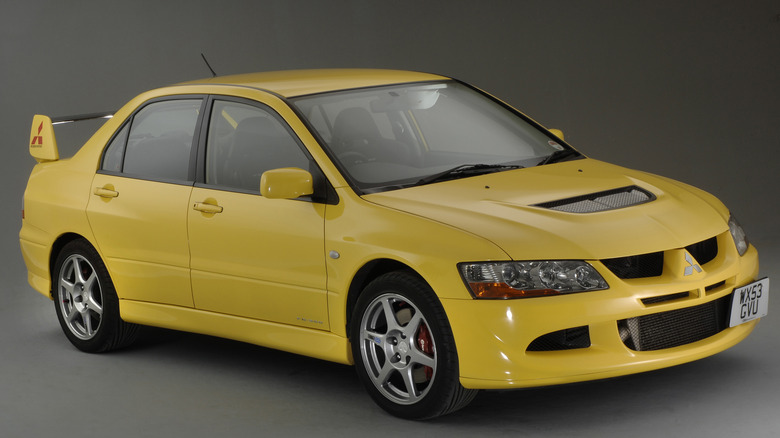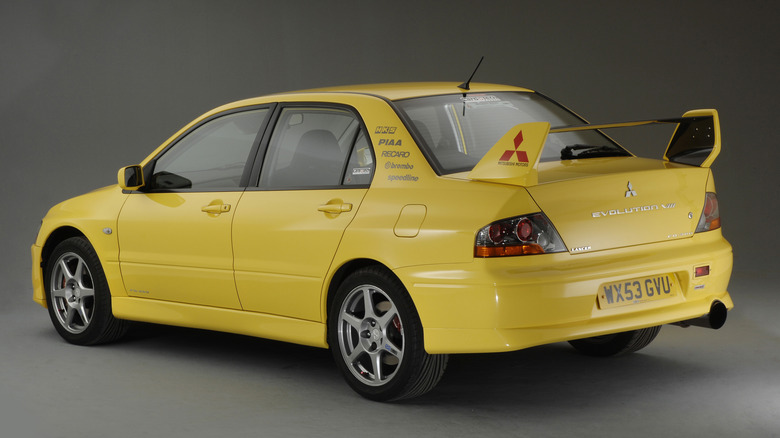This Was The First Mitsubishi Lancer Evo To Be Brought To America
Though it might not need an introduction to its many fans, the Lancer Evolution, commonly referred to as just "Evo," is a sports sedan that was manufactured by Mitsubishi from 1992 until 2016. The Evo was heavily inspired by the brand's long history of rally car racing and featured a 2.0-liter turbocharged four-cylinder engine, coupled to an all-wheel drive system.
The Mitsubishi Evo was a dream car for multiple generations of gearheads, somehow always managing to stay in the limelight. When it wasn't taking home rally trophies, it was starring in films such as "2 Fast 2 Furious" and "The Fast and the Furious: Toyko Drift," not to mention the "Gran Turismo" series of games for Sony Playstation.
But for approximately a decade, the Evo was a forbidden fruit for American drivers. That's because the Evo was originally intended for the Japanese Domestic Market (JDM) only. By the late-1990s, worldwide demand became overwhelming and Mitsubishi acquiesced by exporting a limited number of Evos to the United Kingdom and elsewhere in Europe.
However, sneaking an Evo into the United States was a complete impossibility because of the Imported Vehicle Safety Compliance Act, which banned the importation of cars that failed to meet strict federal safety and emissions standards.
Drivers won the fight between Mitsubishi and Subaru
The motivation to finally jump through the hoops of certifying the Evo for the U.S. market came after Mitsubishi witnessed the success that its archenemy Subaru was enjoying in the American market with their Impreza WRX, a direct competitor to the Evo that was also based on a rally car. So in 2003, the Lancer Evo made its grand arrival in the United States, approximately one year later than Subaru's WRX.
Like most imported cars bound for the American market, the domesticated version of Mitsubishi's new-for-2003 Evo VIII (eighth-generation) was slightly detuned and had larger bumpers than the Japanese version for improved crash protection. Still, the American Evo managed to produce 271 horsepower, which was only five less than the JDM car. One other quirk unique to the American Evo was a five-speed manual transmission instead of the Japanese-market six-speed.
Even though the 2003 Evo's $28,987 price tag (approximately $47,000 in today's dollars) was more than double that of the basic Lancer on which it was based, it was still considered a relative bargain because of all the performance goodies. How fast was it? Car and Driver ran one from zero to 60 mph in 5.0 seconds flat, which was about on par with BMW's M3 that cost a whopping 60% more than the Evo.
Less than one week after the 2003 Evo hit American shores, Subaru, not willing to be upstaged by Mitsubishi, unleashed an STi version of its WRX at the Detroit Auto Show. The STi produced 300 horsepower, a 29 horsepower advantage over the domestic Evo. And so went the ongoing rivalry between the two frenemies until 2015, when Mitsubishi discontinued the Lancer Evolution, citing increased interest in crossovers and SUVs rather than compact performance cars.

